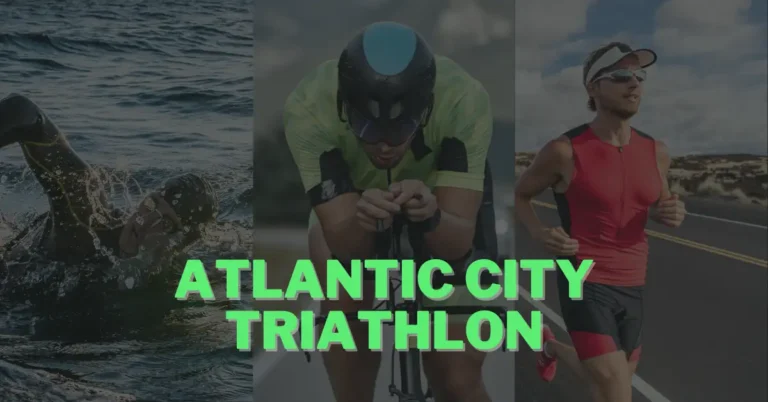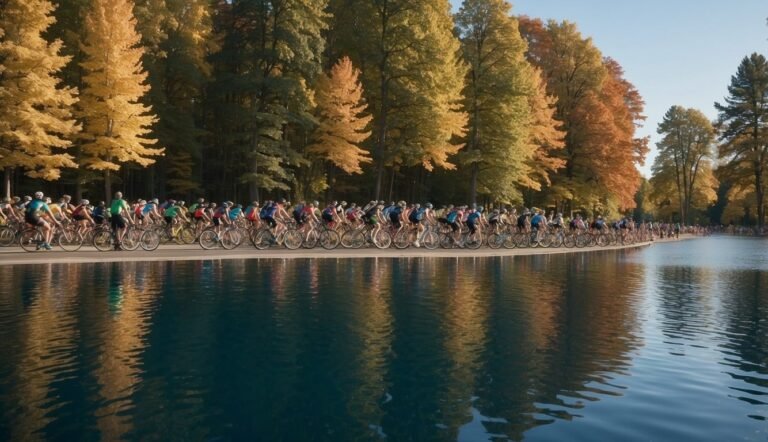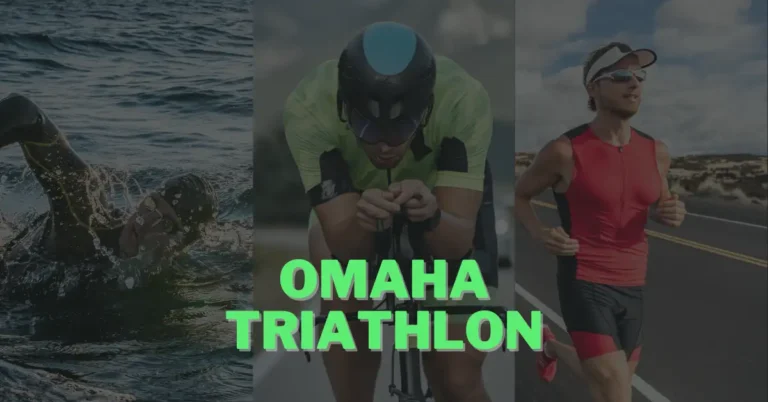📦 FREE Shipping
What is the Order of a Triathlon: The Race Sequence 2024!

I’ve always been captivated by the challenge and excitement of triathlons. You might wonder: What is the Order of a Triathlon? This multisport event tests athletes’ endurance across three disciplines: swimming, cycling, and running.
As a dynamic race, it begins with participants slicing through open waters in the swim segment. This is not only a bracing start to the race but also a strategic one, ensuring athletes tackle the most physically demanding and safety-critical part of the race with fresh energy and full focus.
After emerging from the water, I transition quickly to the next phase—cycling. This segment allows athletes like me to dry off and settle into a rhythm as the landscape rushes by. It’s a test of both power and strategy; knowing how to pace myself is as crucial as my pedal strokes. The energy in the air is palpable as athletes make calculated moves to gain ground.
The final leg of the race is the run, where I dig deep into my reserves to keep my pace over the finish line. This last discipline proves to be a true testament to an athlete’s stamina and mental grit. Navigating the transitions between each segment is an art in itself, a race against the clock where every second counts. The triathlon is not just a series of swim, bike, and run; it’s a dance of discipline and determination from start to finish.
Understanding Triathlon Basics
My journey into the world of triathlons has taught me the essentials every aspiring triathlete should be familiar with. I’ll quickly dive into the standard disciplines and order of events, as well as the race distances and categories to get you up to speed.
Triathlon Disciplines and Order
A triathlon is composed of three consecutive disciplines: swimming, cycling, and running. They always occur in that specific order. I find that the reasoning behind this sequence is to prioritize safety; swimming when exhausted increases the risk of drowning, hence it leads the event. Here’s a snapshot:
- Swimming: This leg kicks off the race, often held in open water like a lake, river, or the ocean.
- Cycling: After swimming, I quickly transition to the next phase — biking. This segment tests my endurance on a two-wheeled journey.
- Running: To close the triathlon, running takes everything I’ve got left to push through the finish line.

Race Distances and Categories
The exhilarating challenge of a triathlon comes in various distances and categories, each designated to test the versatility and stamina of athletes like myself. Behold the array:
- Sprint Triathlon: Ideal for beginners, featuring a 750m swim, 20km bike, and 5km run.
- Olympic Triathlon: A notch up with a 1.5km swim, 40km ride, and 10km run.
- ITU and Super League Triathlon: These races focus on short, fast-paced formats and may feature unique rules like draft-legal cycling.
- 70.3 Triathlon (Half Ironman): As the name suggests, it’s a grueling 1.9km swim, 90km bike, followed by a 21.1km run.
- Ironman Triathlon: The ultimate test with a 3.8km swim, 180km cycling, and a marathon run of 42.2km.
Non-drafting triathlons require keeping a distance from competitors on the bike to make it a true test of solo capability, whereas drafting events like certain ITU races allow for a more strategic, group cycling dynamic. No matter the distance or type, every triathlon demands my respect for the commitment and tenacity needed to cross that finish line.
Preparation and Training

When I train for a triathlon, I focus on building my endurance and strength, mastering transitions, and ensuring my safety and health.
Developing Endurance and Strength
Endurance is the bedrock of my triathlon training. I create a balanced plan that gradually increases my swimming, cycling, and running distances. Here’s a snapshot:
- Swim: I prioritize my swim stroke technique as efficiency reduces fatigue. I swim at least 3 times a week, increasing my laps progressively.
- Bike: Twice a week, I work on leg strength with hills and resistance.
- Run: I mix long runs for stamina and sprints for speed, always careful to avoid cramping and muscle injuries.
Transition Training
Mastering transitions shaves off vital seconds from my race time. Practicing the switch from swim to bike and bike to run is essential. I lay out my gear — wetsuit, shoes, triathlon helmet — and rehearse quick changes. I particularly focus on efficient wetsuit removal and fastening my helmet securely without fumbling.
Safety and Health Considerations
Safety is crucial; there’s no compromise here. I always train with a buddy to mitigate risks like drowning or accidents. I’m meticulous about my health: proper nutrition, hydration, and monitoring my fitness to prevent overtraining. Knowing my body’s limits allows me to push boundaries without jeopardizing my wellbeing. I’m also sure to have the appropriate gear for each leg of the race, ensuring I’m as prepared as possible.
Race Day Dynamics
On race day, my focus is sharp, and every step is strategic, from how I navigate transitions to managing my equipment and understanding the course.
Navigating Transitions
I master the art of transitions, often called T1 and T2. T1 is where I switch from swimming to biking, and T2 from biking to running. Each transition zone is a flurry of activity, and my goal is to move smoothly and quickly. Volunteers are crucial here, guiding athletes and sometimes holding bikes. I’ve seen many races where the skill in transitions affects the overall time as much as the individual events.
T1: Swim-to-Bike
- Goal: Quick, efficient wetsuit removal
- Gear: Goggles off, helmet on
T2: Bike-to-Run
- Goal: Suited up for the sprint finish
- Gear: Bike racked, running shoes on
Equipment and Gear
The right gear is key. In the swim, my triathlon wetsuit is my second skin, offering buoyancy and warmth. On the bike, my helmet, shoes, and bike must be in top condition. During the run, my shoes need to support a fast, controlled sprint to the finish line. Here’s an essential gear checklist:
- Swim:
- Wetsuit
- Goggles
- Cycle:
- Bike
- Helmet
- Cycling Shoes
- Run:
- Running Shoes
- Hat/Visor (optional)
Understanding the Course
I dive into the details of the course ahead of time. I familiarize myself with the swim course, noting where kayakers and lifeguards are stationed. This ensures my safety and gives me control in the water. On the bike and run courses, I watch for logistics that can affect my speed, such as turns or hills, and I make note of where spectators gather to cheer us on – their energy is a boost. Understanding the nature of the course allows me to pace myself and channel energy to where it’s needed most, especially if I’m aiming for a dramatic sprint finish at the finish line.
The Culture of Triathlon
The spirit of triathlon blends rigorous physical demands with a rich history and iconic settings that enchant spectators and push athletes to their limits.
History and Tradition
I find the origin of triathlons captivating. It all started in the 1970s in California, particularly in San Diego, which many consider the birthplace of modern triathlon. USA Triathlon acknowledges these roots while shaping the sport’s future through official championships and by endorsing local races that keep the tradition alive. Historical milestones, such as the inception of the Ironman race in Hawaii, have fostered a culture of endurance and inspired a myriad of multisport races worldwide including variations like the Ultraman and Duathlon.
Iconic Races and Locations
The Ironman World Championship held annually in Hawaii is a symbol of the pure grit and tenacity that define triathlons. The volcanic landscapes provide a stunning – and challenging – backdrop that has turned the race into a legend. Super League Triathlon has also carved a niche, providing fast-paced, spectator-friendly formats that inject adrenaline into both the competitors and the audiences. Places like California continue to be a hotbed for triathlons, drawing thousands of professional athletes and amateurs eager to test their limits alongside like-minded enthusiasts.
Frequently Asked Questions about What is the Order of a Triathlon
I’m here to dive right into the specifics of triathlon events, detailing their structure, sequence, and the excitement that each discipline brings.
How is a triathlon race structured in terms of events?
In a triathlon, I start with a swim, transition to cycling, and then push through to the run.
Can you list the sequence of disciplines in an Ironman competition?
Sure! In an Ironman, I maintain the same sequence: swim first, then bike, and finally, the marathon run.
What kicks off the excitement in a triathlon?
The swim leg is the adrenaline-pumping start to every triathlon I compete in.
What’s the final challenge a triathlete faces in the race?
The run is the ultimate test of endurance, concluding my triathlon journey.
How do the distances vary across different triathlon events?
Distance varies widely—from sprint triathlons to Ironman races—significantly altering the length of each segment I tackle.
In what thrilling order should a triathlete train for each segment?
I train in the order of events: first perfecting my swim, then honing my cycling skills, and finally, increasing my running stamina.
Is your question “What is the Order of a Triathlon” answered? Leave me a comment and make sure to also check out Triathlon Equipment and What is an Ironman Run.





